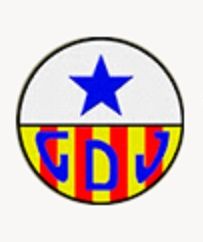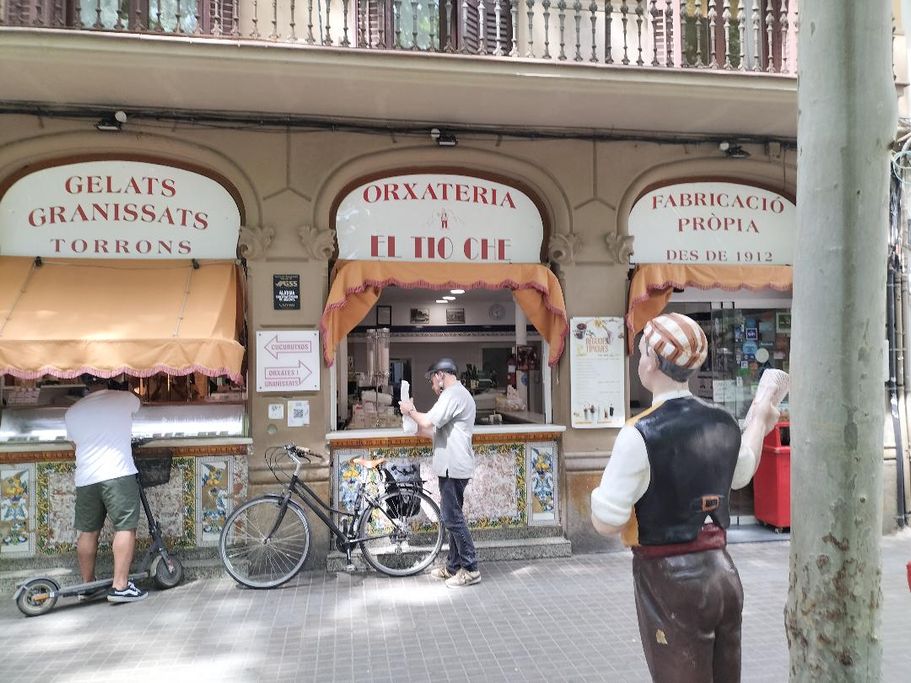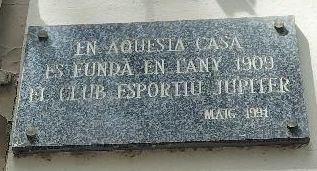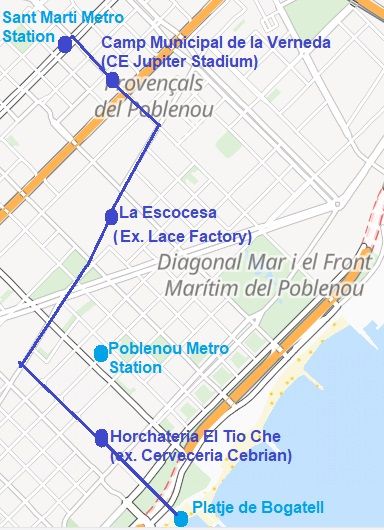There are three clubs still playing in Spain that are Scots. The oldest, indeed the doyen of all current Spanish teams, is Andalusia's Recreativo de Huelva. The seond is Murcia's Aguilas. And the third, from the Barcelona suburb of Poblenou, often described as the Catalan Manchester but more accurately a combination of our own Newmilns and Paisley, is CE Jupiter. And its inception, translated from the Catalan, is on its web-site simply reported thus:
"An historic club, it was on May 12, 1909, when, at a meeting at the “Cerveceria Cebrián” (the Cebrian Bar) - today the “Tio Che” drinks and ice-cream parlour - C. E. Júpiter was founded. The architects of the proceedings were the Mauchan brothers, Scots who worked in Barcelona. Due to the growing popularity of football, David Mauchan had a ball brought from the British Isles and encouraged a few friends to found a club."
Today a small plaque on the front of the premises quietly celebrates the event.
But the impulse not for the club directly but for football in then new suburb of Poblenou more generally came from elsewhere. The father of the Mauchan brothers had via Gasgow's Pollokshaws and Nottingham come as a former player and a referee to work in the factory, quickly known as La Escocesa, "The Scot", constructed in the growing city quarter. It, the factory, was a joint-venture by entrepreneurs from Britain's two lace-making centres, Newmilns and also Nottingham. Mauchan Senior had a foot in both camps. He also had a passion for The Beautiful Game, one which in Spain he indulged by becoming a pioneering official and passed on to his sons, who then made their marks both as early players and, in time again, with the whistle.
And today not only does CE Jupiter play in the Primera Catala, the Catalan Premier Division, and at the local stadium, Camp Municipal de la Verneda, and the Cebrian Bar has become Tio Che but La Escosesa building has been transformed into a centre for artists. So we suggest the following. Forget the car. Take the metro to St. Marti, walk the 200 or so yards to and past the stadium and the kilometre to La Escosesa, the source of in-house, Scots-founded F.C. Escoces. It will not all be pretty but this is genuine history of the post-industrial kind, the fundamental origins of Barcelona football and only mildly indirectly of F.C. Barcelona too. But then you can walk a further kilometre through the park to the the very pleasant, tree- and cafe-lined Rambla de Poblenou, the down-town version of up-town Las Ramblas. Take a stroll down it to the tiled and open-fronted Tio Che itself, drink a cold horchata, the milk pressed from the tiger nut and originally a Valencian speciality, have a bite to eat or an ice-cream and then either head back to town directly from the Poblenou metro station or, if you've brought your bathers, for the beach. The Playa de Bogatell is less than half a mile further on and not bad at all.
Back to the Spanish Trail
or to the SFHG Home page



